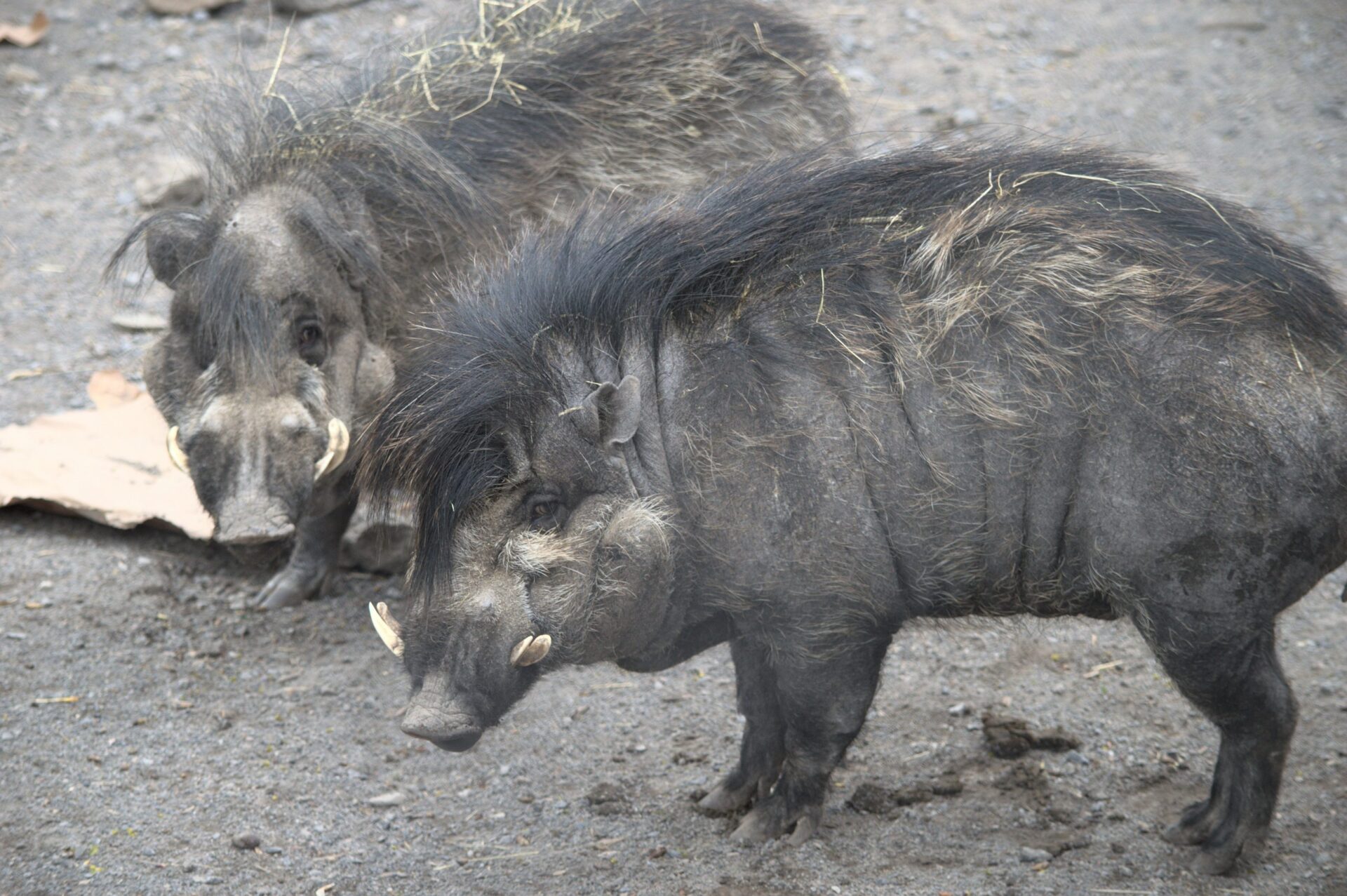Visayan Warty Pig

Basic Information:
Scientific Name: Sus cebifrons
Habitat: Visayan warty pigs were originally found across the 6 Visayan islands of the Philippines: Bohol, Cebu, Leyte, Masbate, Negros, Panay, and Samar. Today, however, it is thought that they have only survived in small populations on Negros and Panay.
Diet: Visayan Warty Pigs tend to root around in the soil looking for tubers, fruits, insects, earthworms, and other tasty treats. They also eat cultivated crops.
Size: 2.5 to 3 feet tall / 4.4 feet long
Weight: Around 44 to 180 pounds
Lifespan: 10 to 15 years in the wild. Up to 20 years in human care.
Distribution Map:
I.U.C.N. Conservation Status:

What does this mean?
Critically Endangered – a species determined by the International Union for Conservation of Nature (I.U.C.N.) to possess an extremely high risk of extinction as a result of rapid population declines of 80 to more than 90 percent over the previous 10 years (or three generations), a current population size of fewer than 50 individuals, or other factors (such as severely fragmented populations, long generation times, or isolated habitats).
Our Visayan Warty Pigs:
Axl (Male) – Born June 12, 2008
Ozzy (Male) – Born June 10, 2008
Ace (Male) – Born September 9, 2008
About Visayan Warty Pigs:
Named for the three pairs of fleshy warts that appear on their face (which are thought to protect their face when fighting), Visayan Warty Pigs are one of the most critically endangered swine species on the planet. Not much is specifically known about this species due to the fact that they were only recognized as a distinct pig species back in the 1990s. This has been made even more difficult due to the rarity of this pig species in the wild. Having disappeared from about 98% of their historic range, only small numbers of this species can be found on 2 of the Visayan islands in the Philippines (for reference, there are 7,641 islands in the Philippines). In fact, the exact number of pigs remaining in the wild is unknown. All this being said, it is known that they travel in groups of four to five where they are found digging and foraging for roots, tubers, and insects to eat.
Did You Know?!
- Visayan warty pigs can raise the hairs on their backs to make them appear larger.
- About 98% of the pigs’ forest habitat has been cleared by local farmers who cut down woodlands to plant crops. When the soil becomes unproductive in a few years, they move on to clear more land. The pigs’ taste for cultivated crops then leads them to uproot the fields of farmers. This habit has led to many pigs being killed for destroying a food source for the poor inhabitants of the islands.
- Despite the fact that every year more and more forest is destroyed in Visayan warty pig habitats, the future for these animals is hopeful. They breed easily in human care and are finding homes in AZA institutions where they can work on rebuilding their population.
- Visayan warty pigs have been spotted using sticks in Paris’s Jardin des Plantes to help them forage for food and to build nests for their offspring. This is evidence that supports the theory that these pigs are capable of understanding and using tools.
